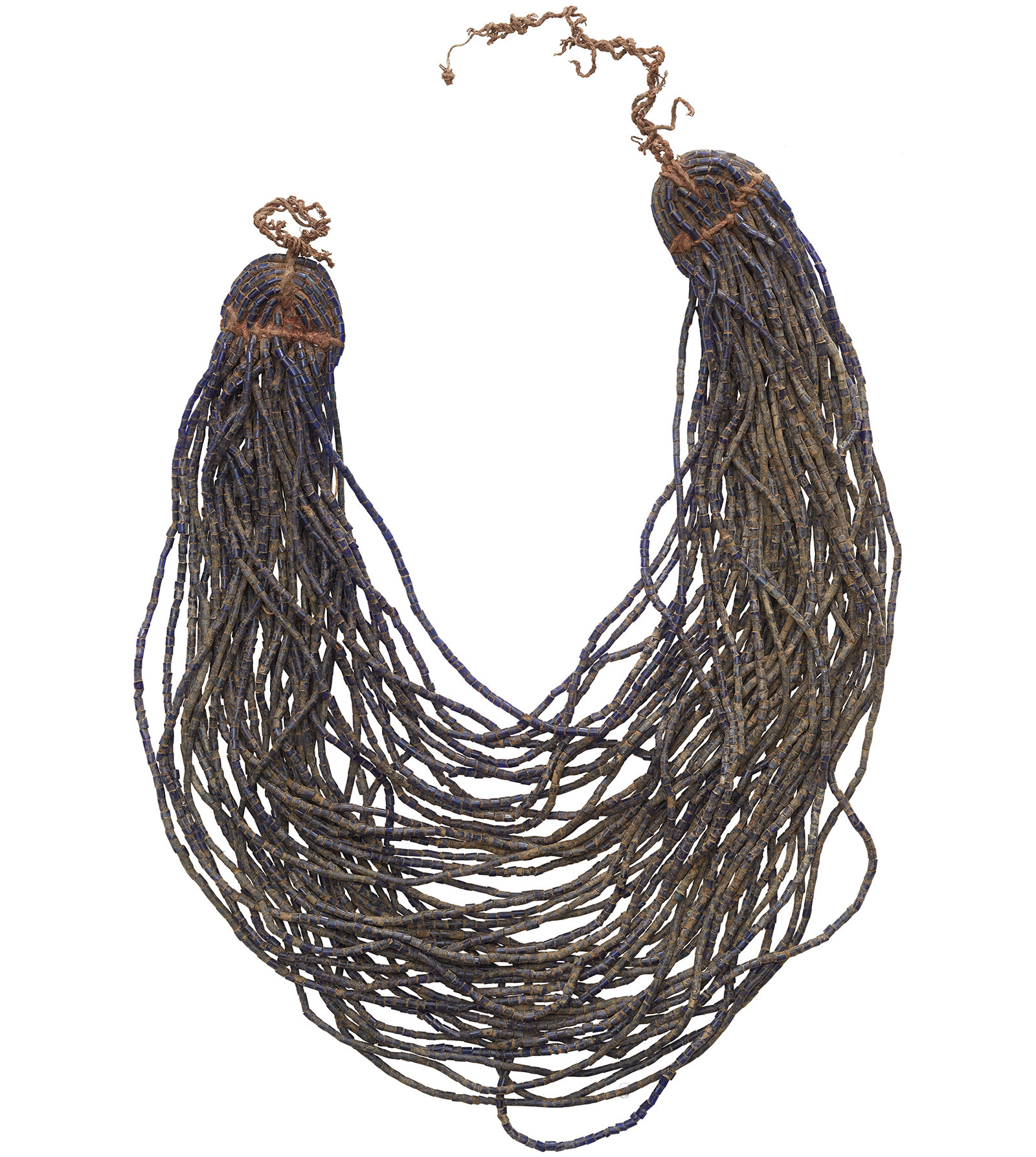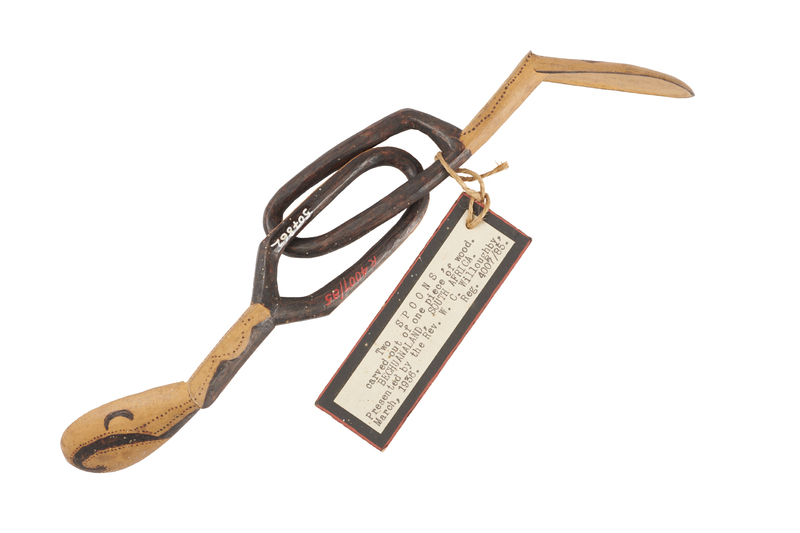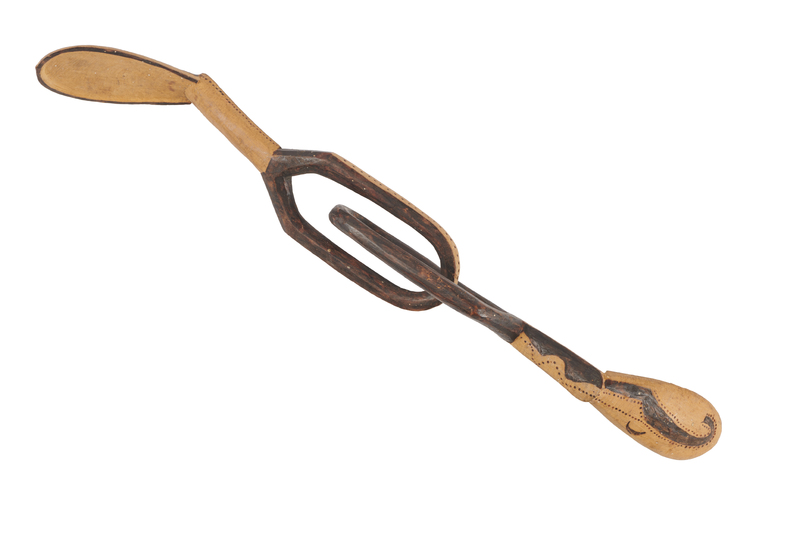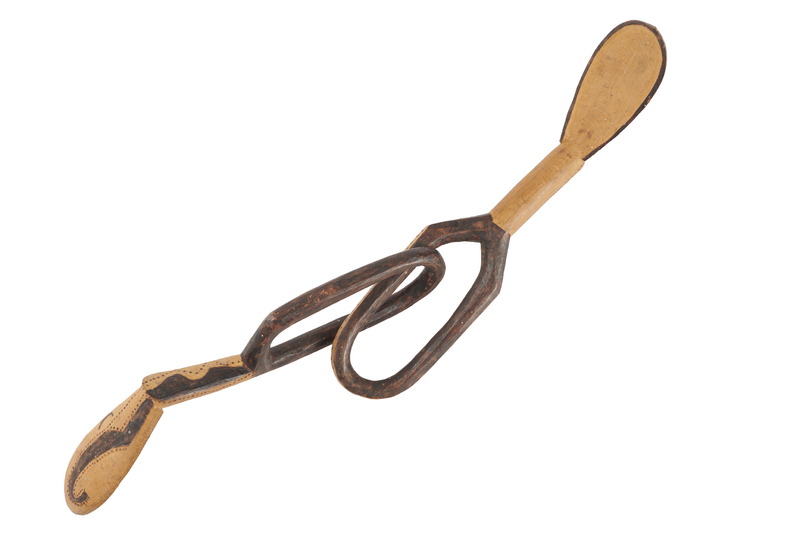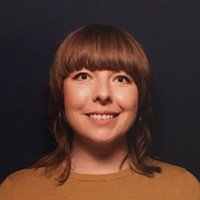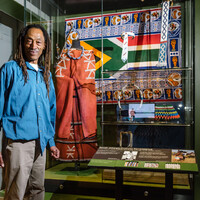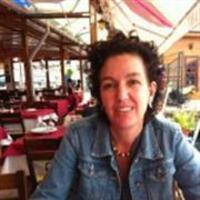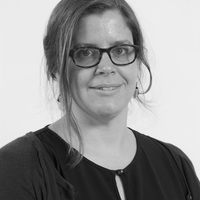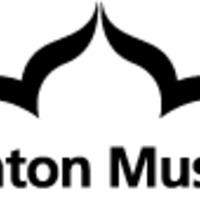Spoon; Leso le Lejang
Item
Title
Spoon; Leso le Lejang
Creator
Unrecorded
Description
Two interlocked wooden spoons carved from one piece of wood. Each spoon has a large blackened loop at the end of its handle, connecting it to the other spoon. The bowls of the spoons are shallow, oval shaped and decorated with blackened designs.
Contextual Description: SL 1:34:12
So we just say leso here... because ...that helped me to understand where the word comes from and what it means. And I said it's leso because when you stir porridge we say 'wa soka' and whatever you're using is 'lesokwa' because 'le-soka ...' the Barotse call it 'Lesokwana'
[In the Pedi and Barotse languages the stirring spoon are called Lesokwa and Lesokwana depending on size and SL is musing on the root of the word Leso - to stir in Setswana is Soka so the implement for stirring has the prefix le, so in proper Tswana and Sotho it should be called “Le-Soka” – TS note]
SL 1:34:58
an interesting thing with these spoons from what I'm seeing and from what I saw that time is that most of them were never used. They were like bought new. Why am I saying this? - otherwise the burn marks wouldn't still be there. They are the first to go after a couple of washes.
The above notes are from a transcription by Kathleen Lawther of a discussion between Gase Kediseng, JoAnn McGregor, Nicola Stylianou, Scobie Lekhuthile and Winani Thebele which took place at the Khama III Memorial Museum on the 5th of August 2019. To listen to the full recording please follow the link below.
So we just say leso here... because ...that helped me to understand where the word comes from and what it means. And I said it's leso because when you stir porridge we say 'wa soka' and whatever you're using is 'lesokwa' because 'le-soka ...' the Barotse call it 'Lesokwana'
[In the Pedi and Barotse languages the stirring spoon are called Lesokwa and Lesokwana depending on size and SL is musing on the root of the word Leso - to stir in Setswana is Soka so the implement for stirring has the prefix le, so in proper Tswana and Sotho it should be called “Le-Soka” – TS note]
SL 1:34:58
an interesting thing with these spoons from what I'm seeing and from what I saw that time is that most of them were never used. They were like bought new. Why am I saying this? - otherwise the burn marks wouldn't still be there. They are the first to go after a couple of washes.
The above notes are from a transcription by Kathleen Lawther of a discussion between Gase Kediseng, JoAnn McGregor, Nicola Stylianou, Scobie Lekhuthile and Winani Thebele which took place at the Khama III Memorial Museum on the 5th of August 2019. To listen to the full recording please follow the link below.
Publisher
Making African Connections
Date
Pre 1899
Type
PhysicalObject
Format
Whole: 370 mm x 42 mm x 30 mm
Type of wood used for this is light coloured wood from either the Motlopi; Boscia albitrunca or Morula; Sclerocarya birrea trees. [TS]
Identifier
R4007/85
Source
Collected by Reverend William Charles Willoughby, a Christian missionary, in what was then the Bechuanaland Protectorate (1885-1966). It is now the Republic of Botswana, having gained independence from Britain in 1966.
From 1889-92 Willoughby was pastor at Union Street Church, Brighton (now The Font pub). From 1893 to 1898 he worked for the London Missionary Society in Bechuanaland. He assembled this collection of objects during this period. This was a period of social and technological changes and these objects represent traditional lifestyles and skills, rather than the contemporary lives of the people Willoughby met.
Willoughby's collection was loaned to Brighton Museum in 1899 when he returned to the UK. The loan was converted into a donation in 1936, and accessioned as acquisition R4007.
Some objects were re-numbered with the WA (World Art) numbering system in the 2000s. These numbers have been reverted to the original R4007/... numbers where possible for consistency in 2019.
This object was on display in the exhibition 'Missionary Collectors' in the James Green Gallery of World Art, from July 2004 to January 2005.
From 1889-92 Willoughby was pastor at Union Street Church, Brighton (now The Font pub). From 1893 to 1898 he worked for the London Missionary Society in Bechuanaland. He assembled this collection of objects during this period. This was a period of social and technological changes and these objects represent traditional lifestyles and skills, rather than the contemporary lives of the people Willoughby met.
Willoughby's collection was loaned to Brighton Museum in 1899 when he returned to the UK. The loan was converted into a donation in 1936, and accessioned as acquisition R4007.
Some objects were re-numbered with the WA (World Art) numbering system in the 2000s. These numbers have been reverted to the original R4007/... numbers where possible for consistency in 2019.
This object was on display in the exhibition 'Missionary Collectors' in the James Green Gallery of World Art, from July 2004 to January 2005.
William Charles Willoughby
Botswana, Southern Africa, Africa
1893-1898
Space/Place
Botswana, Southern Africa, Africa
Cultural Group: Tswana
Rights
Creative Commons Attribution-ShareAlike 4.0 International
Item sets
Linked resources
Filter by property
| Title | Alternate label | Class |
|---|---|---|
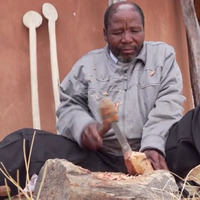 Woodcarving Woodcarving |

